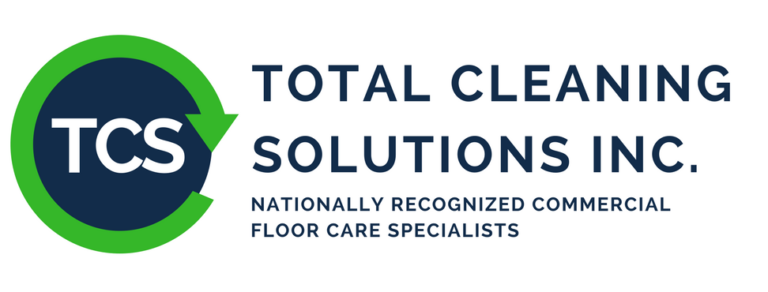Warehouse floors experience extensive wear and tear on a daily basis. Heavy foot and vehicle traffic, heavy objects being dropped, chemical spills, and so on are just a few examples of what type of damage a warehouse floor experiences each and every day.
Naturally, such damage should be mended and cleaned regularly, not just because it will make the floor more aesthetically pleasing, but also because it will prevent it from becoming a major hazard to both equipment and human life.
That said, warehouse floor cleaning can be a massive undertaking depending on the circumstances, of course. That is precisely why professional assistance is often required to clean and repair the floor accordingly.
After all, you need someone who knows what they’re doing and how to get the job done the right way. With that in mind, let’s have a look at some tips that will help you clean your warehouse floor more effectively.
Analyzing the Situation
The foundation of every successful cleaning process is analysis. If you don’t analyze the situation beforehand, you won’t know what to expect.
Moreover, you might use the wrong cleaning method or the wrong cleaning solution, which will eventually result in wasted time, effort, and resources.
At the very least, assessing the situation your warehouse floor is in will help you determine whether you’ll manage on your own or will you have to call one of the commercial floor cleaning companies in to help you out.
Speaking of which, here are a couple of things you should do to help you better understand the condition your floor is in.
- Determine the type of flooring in your warehouse, such as concrete, VCT (Vinyl Composite Tile), and so on.
- Assess the dirt levels, such as grime, dust, chemical or oil spills, and so on.
- Identify potential damage, such as cracks, pitting, peeling, spalling, gaping, and so on.
- Measure the entire surface area of your warehouse floor.
Once you’ve gathered your findings, you’ll be able to determine your needs more easily. Based on the data you have, you’ll know the type of cleaning your floor requires.
For instance, it might just need a thorough sweep and proper wash, or the situation may call for heavy-duty floor cleaning involving machinery and a specific floor cleaning solution. You’ll also be able to determine the extent of damage to your warehouse floor.
Perhaps your floor just needs to be resealed, or maybe it requires a deep scrub and a brand new layer of wax. In any event, analyzing the situation gives you a clear overview of what’s needed.
When you know what’s needed, you can save time, labour hours, costs, and resources required to do the job properly. Otherwise, you’ll have to improvise on the spot, which can further extend any and all expenses.
Acquire Proper Equipment
The process of industrial warehouse cleaning can be quite demanding and challenging. More often than not, you’ll need both the manpower and the right equipment to clean and restore the floor properly. It all depends on the extent of the damage, how dirty the floor is, and how large the floor surface is.
That said, industrial sweepers and scrubbers are pretty much a must regardless of the circumstances. The main reason is that such machinery can accomplish what’s needed much faster and more efficiently than manual labor ever could, especially if your warehouse floor is particularly large.
However, before you start the cleaning process, you should mend the damage, if any, of course. For example, a concrete warehouse cleaning process involves deep scrubbing the top layer of the floor, after which you can apply acrylic concrete sealer to fill any gaps, cracks, or pits that might’ve appeared due to extensive wear and tear.
Regardless of the situation, industrial sweepers can easily remove debris and any grime or dirt. At the same time, scrubbers tend to stains, spills, and other dirt that might’ve integrated with the floor over time.
Preparing a Cleaning Method
As mentioned before, the cleaning process can be quite challenging, meaning it’s more complicated than it may seem. In other words, you’ll have to choose a proper cleaning method if you want to get the best results. Here are a few things worth considering.
- Familiarize yourself with the floor layout – This will help you strategize on where to start cleaning and how to proceed. It will also help you identify tight spots where different machines might be needed for better maneuverability.
- Mind the floor material – Each type of floor requires a specific approach. Ceramic tile and hardwood floors are more delicate, so you can’t use abrasive cleaning solutions and heavy machines. On the other hand, concrete and VCT floors can not only endure more thorough scrubbing and cleaning but may actually need a more aggressive approach.
- Use a proper cleaning agent – Health and safety are always the top priority. You should keep that in mind when choosing a cleaning solution for your warehouse floor. Chemical-based cleaning agents are more abrasive and could potentially release toxic fumes. If your warehouse isn’t properly vented, you might consider a more eco-friendly and less toxic solution that should do the job equally well.
- Schedule cleaning cycles – In most cases, you won’t be able to clean everything in one day. After all, halting warehouse operations until cleaning or floor repairs are done can cost a lot of money. Furthermore, you can’t clean while the warehouse workers are there, or you’ll just be bumping into each other. The vast majority of cleaning companies work at night when no one is there, or they schedule cleaning cycles during a specific time of day when no one is around for a while.
Future Floor Maintenance
Once properly cleaned and restored, your warehouse floor will need to be maintained so that it can retain its beauty for years to come. Simply cleaning the floor once it gets visibly dirty won’t do you any good.
The longer the dirt remains neglected, the more damage it will do to your floor in the long run. Therefore, your best option is to schedule regular cleaning and maintenance. You can segment tasks for daily, weekly, and monthly operations so that cleaning is consistent and thorough at all times.
Moreover, every now and then, either the top layer of the sealer or the floor wax should be removed and then reapplied as a part of regular maintenance. This will ensure that dirt or debris doesn’t get into the floor itself to cause damage that’s more difficult to repair and clean.
Clean Your Warehouse Floor the Right Way with TCS Floors

Warehouse floors are no strangers to wear and tear. Heavy foot traffic, vehicle traffic, chemical spills, and impact damage are just some of the things these floors come face-to-face with each and every day. This is why warehouse floors need proper cleaning and care.
Here at TCS Floors, we know exactly how to do that and more. With over 30 years of experience, our cleaning company has risen to the top because we place great focus on driving the best results possible. When we clean and restore commercial floors, we do so with care and dedication.
After all, customer satisfaction is our priority. That said, feel free to take a look at some of our previous work and see for yourself how we do things. And if you like what you see, don’t hesitate to reach out to us today, so that we can clean your warehouse floor the right way.
Final Thoughts:
The very process of warehouse floor cleaning needs to be planned out accordingly. If not, you may not get the results you were hoping for, not to mention that you may also waste both time and resources.
If you’re not completely sure how to clean your warehouse floor properly, you can always rely on one of the cleaning companies to help you out. After all, it’s better to seek assistance than to risk making a costly mistake.
FAQ:
What is the best way to clean a warehouse floor?
The best way to clean any warehouse floor is to first assess the overall situation. Based on the circumstances, the cleaning process may involve more steps aside from sweeping dirt and debris or cleaning the floor with a damp mop and a proper cleaning agent. Those additional steps may include industrial scrubbing, seeping, sealing, and waxing, to name a few.
What flooring is used in warehouses?
That generally depends on the warehouse, but essentially, most warehouses use concrete floors due to the durability and flexibility capabilities of a concrete floor.
Which is the best solution for cleaning the floors of factories?
Factory floors are some of the toughest floors to clean. Various spills and other types of dirt are quite a common occurrence in such facilities.
Therefore, the best way to clean factory floors is to use proper machines like driven or walk-behind floor scrubbers and sweepers, as well as cleaning agents that can easily remove hard stains from chemicals and other sources.
How to clean up oil spills on warehouse floors?
Oil spills can be quite a challenge to remove, mostly because oil tends to seep into any pores or cracks in the floor.
Moreover, hot water doesn’t do much, which is why you need a degreaser combined with a cleaning agent that is specifically designed to remove oil stains. That and a floor scrubber with brushes, not pads, should do the trick quite effectively.


